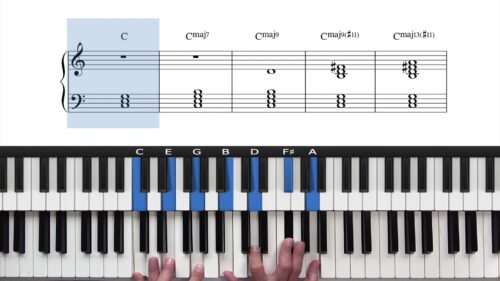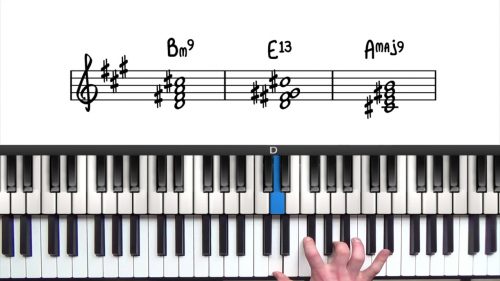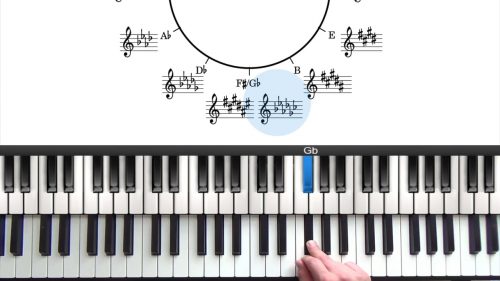Walking Bass Line Piano Tutorial
In this lesson I’m going to provide an introduction to walking bass lines in jazz piano. I’m not just going to show you a walking bass line. I’m going to carefully deconstruct the anatomy and makeup of an effective walking bass so that you are equipped with the knowledge to apply this to any medium to up-tempo jazz standards.
We will start of by discussing some important principles for creating a simple walking bass line and then apply these principles in the context of both major and minor 251 progressions.
In part 2, we will then incorporate scales into our walking bass lines and talk about other stylistic aspects such as adding additional passing tones and how to correctly count to make your bass lines swing.
In Part 3 we will then apply these principles and concepts to the tune Autumn Leaves. Check out the Autumn Leaves Tutorial if you haven’t already watched it.
How To Create Walking Bass Lines Jazz Piano
When creating walking bass lines, it’s important to outline the root and 5th of the chord. Incorporating the 3rd of the chord will also give your bass line a stronger harmonic foundation.
When starting out with walking bass lines, I would recommend that you always target the root when changing chords. Later down the line, you can then choose to target tones other than the root of the chord.
When changing from 1 chord to the next in a bass line, there are 2 main options. The first option is a chromatic approach tone into the target note and the second option is from a whole tone above or below the target note.
Lesson Downloads
-
Walking Bass Lines Lesson Supplment File Type: pdf
Practice Tips
Here's 3 rules to follow when starting out with walking bass lines:
-
Rule 1 is to outline the triad of the chord. That includes tones: root, 3rd and 5th.
-
Rule 2 is to always target the root when changing from 1 chord to the next. (You can mix this up later down the line but this will set strong foundations).
-
Rule 3 is to change chords by either a chromatic approach pattern, or from a whole step above or below the target note.






excellent Tutorial on Walking a Bass line on Piano. Loved it and can’t wiat to continue on to part 2 and 3. Thanks Hayden. I loved it.
Great thanks George… we can take the theory further, but this will give you a good foundation for approaching many of the common standards. As you can see, this demonstrations in this lesson work particularly well with 251s. Enjoy the other lessons 🙂
Yeah, this is going to be fun! Thanks Hayden!
P.S. I don’t see the link for the downloadable lesson supplement.
Thanks Mark – I’ve fixed that now 🙂
Hello Hayden: I just wrote the text below to Tuomo regarding his lesson on how to play this approach to “Softly as If …” and thought I’d tell you the same thing, loved the lesson and now will have another way of playing various tunes. Thanks, Smole
Hello Tuomo: I was looking for ways to play Softly and the search of the PG led me to this fantastic lesson. I do not have a question (as yet, maybe later) but simply wanted to thank you for this lesson. I did not think I would like using the walking bass line approach but this lesson endeared me to it. I also just love the way you actually voice your chords, another benefit of the lesson. Of course, I immediately moved to the related lessons that Hayden posted on this approach to benefit from all of them. Best, Smole